If you’re a regular reader, you will probably know that I’ve not moved far from where I grew up, and that in my POTA activation reports I like to talk about the history of the parks and sometimes how they’ve been important in my life. Fair warning about this one then, as this is going to be 90% reminiscence, 10% radio.
Because guess what just cropped up as a location on the POTA site? GB-4057 Stour Valley Local Nature Reserve.
The River.
It’s time to go back.
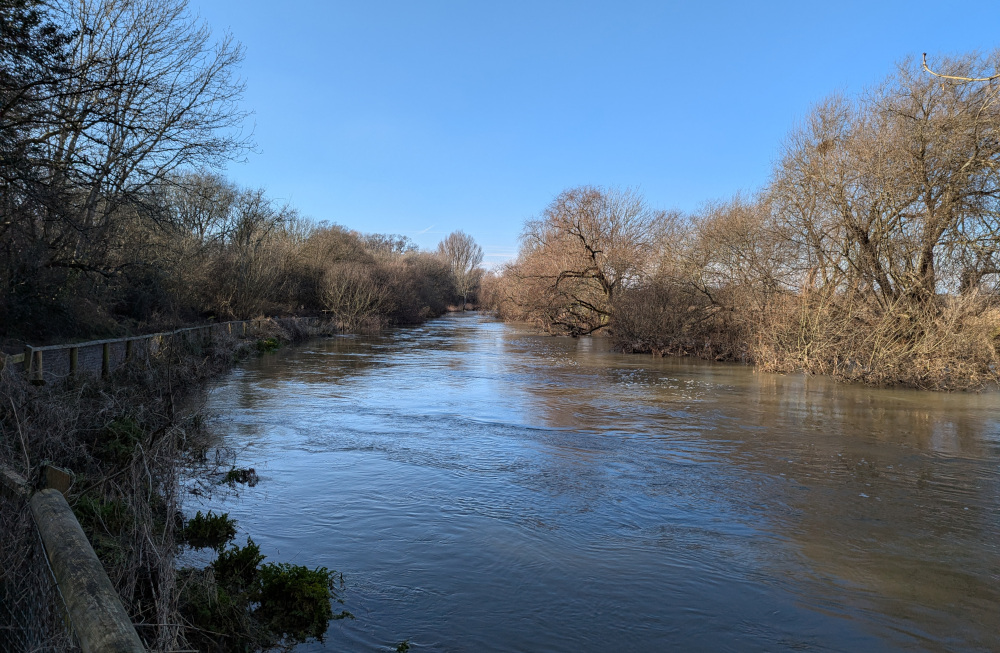 The River Stour in full flood
The River Stour in full flood
Within walking distance of all my childhood homes, this was and remains one of my parents’ favourite walking spots. A lot of my own memories are centered around this place too, to the extent that you don’t have to qualify which river. This is the river. Anywhere in the world we might be, if you say you’ll “meet me by the river”, my first thought will be exactly here:
This is me writing in 2005 (aged 20), having come back home after a couple of years of University, reminiscing about my childhood haunts:
The place I remember most from my childhood was the river. I recall it in every detail, in every season, we went there so many times… Over the logs and across the orange gravel car park, down the path between picnic benches or across the grass, down the steps and across more gravel until you got to the riverbank where I paddled in red Wellington boots and my parents warned me not to go too deep, where the dogs swam and shook themselves dry, and where the two swans nested year after year.
Then along the path or the muddy bridleway alongside the river, past the jetties where grumpy fishermen sat or sometimes you could catch minnows in a net when the fishermen weren’t there. At the end of the path you could carry on along the grassy bit of the bank or head up towards the road, from where you could turn left up the steep steps with the handrail in the middle, or… turn right.
It was a clear Spring evening following a damp morning, the first time I turned right. The path, although it didn’t deserve the name, was in equal parts grass, mud and water. Some puddles were deep enough that water spilled in over the top of my wellies, and most were so thick with mud that you could hardly tell them from the surrounding traversable ground. I’d gone this way while my parents waited by the steps—they discouraged me, of course, but there are times in one’s life when the desire for adventure, however small, is unquenchable. I headed over towards the trees on the left of the path, as the ground was more solid there, and kept walking for a few minutes until, away amongst the tall trunks to my left, I saw a lake shining bronze in the evening sun. I felt proud and special to have found this place, a place of serene beauty that most people never even knew existed.
After a few minutes I moved onwards, until my passage was stopped by a waterlogged field, flooded by the spring rainfall making its way downriver. I headed back slowly to my parents, and we went home.
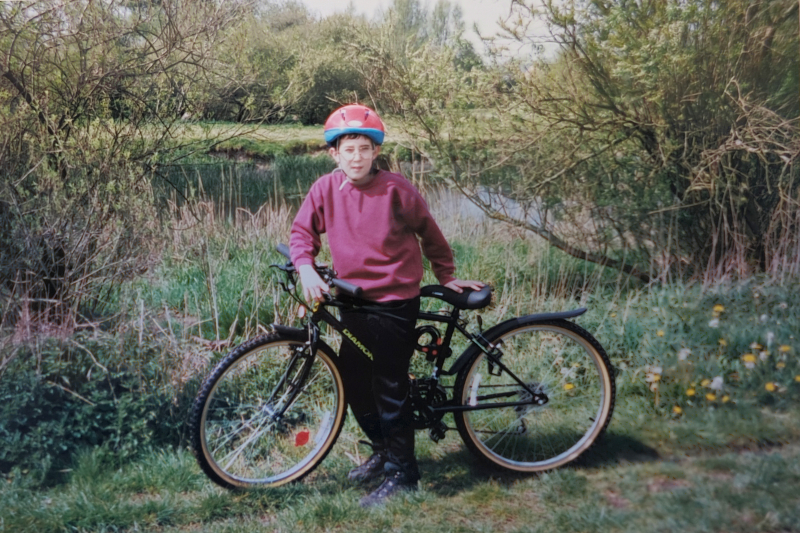 Me at the river with my bike, sometime in the early 90s
Me at the river with my bike, sometime in the early 90s
My memory of 2005 now is as hazy as my memory of 1995 was back then. The file I wrote this in has a date of 2005, and there are photos of the river from August 2005 too. But the entry ends the following way, and I’m not sure whether this was tacked on post-2005 describing that day, or whether this is referring to some other trip back down memory lane in the intervening time, perhaps in my teenage years:
I think one day, many years later, I did go back there, and discovered houses had been built where I remembered the pond being. Of course, that might have been a dream as well. Dreams and reality are intertwined in my mind at the best of times, but years’ distance does nothing but hinder the distinction. Maybe I should go back again, and find out for sure what became of the place, and whether it was even real. Or maybe I shouldn’t, maybe I should stick with just the beautiful, wonderful memory I have—just in case it was all a dream after all.
“Bronze Lake” has remained a MacGuffin of my childhood since that time.
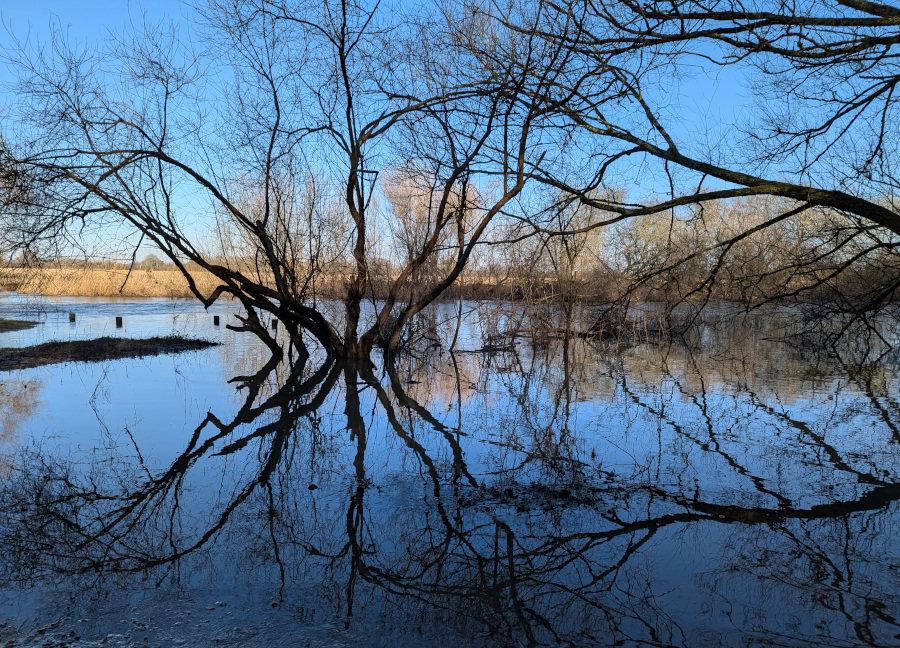 Typical February water levels on the Stour
Typical February water levels on the Stour
But now 20 more years have passed. Middle-aged eyes see a world that is a lot smaller than what they see at age 10, or even at age 20. We have endless aerial imagery at our fingertips and accurate GPS receivers in every pocket. The price we pay for easy navigation is a little less wonder in the world.
It was time to find out for sure.
The water level varies a lot here between winter and summer, so if there was no lake in August 2005, could it have just been too dry? That seemed reasonable, and by coincidence there I was, on just as damp a day as it must have been in my first childhood discovery, ready for my last and best shot.
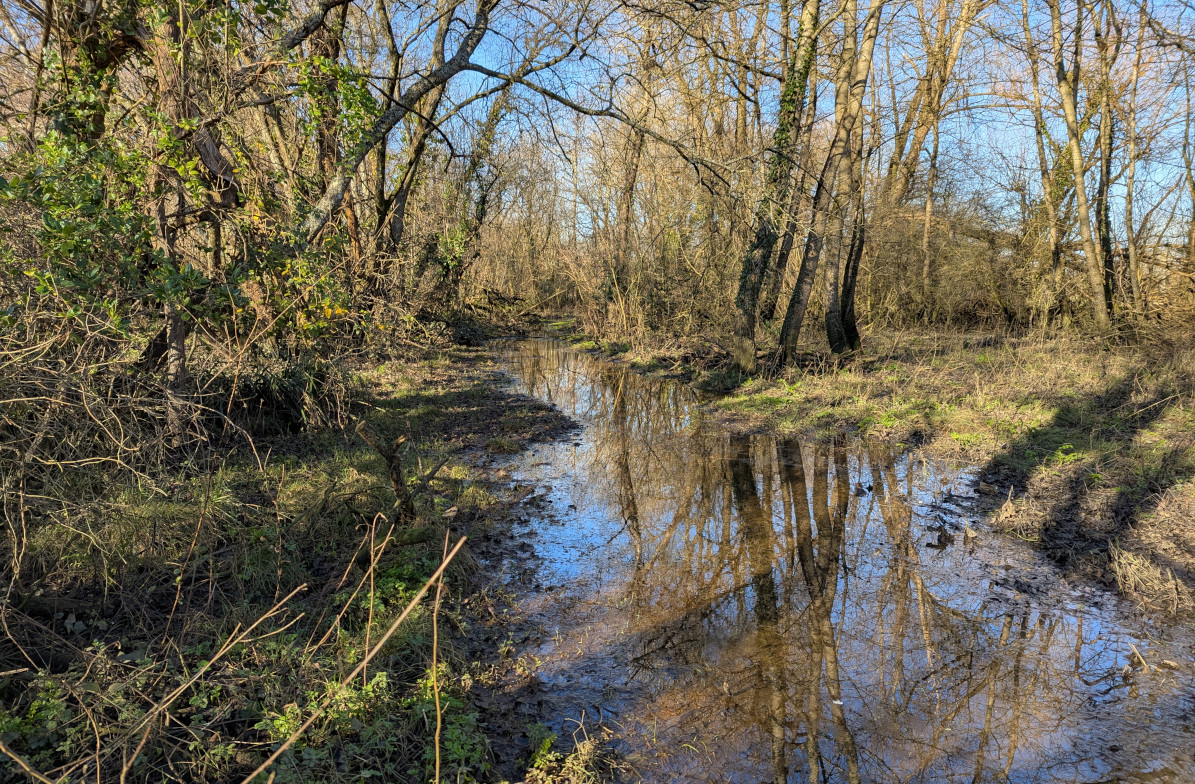 The footpath I followed, thirty years ago. This time, with adult caution and no wellies, progress was a little slower.
The footpath I followed, thirty years ago. This time, with adult caution and no wellies, progress was a little slower.
The “houses” I wrote about would have been what is now Wheatplot Residential Park, a development of about two dozen static caravans. But even in my childhood, that was a mobile caravan park and would have been fenced off. My “bronze lake” that lived so large in my memory must have been further along, in the wooded section of the nature reserve that sits between the caravan park and the water works.
I trudged through a few hundred metres of mud, preferring the puddles and their rocky bottoms to the sludge that covered the rest of the path from one side to the other. I rounded the corner of the caravan park, crossed a small stream too carelessly, stuck one foot six inches deep in the mud, stumbled forward… and there it was.
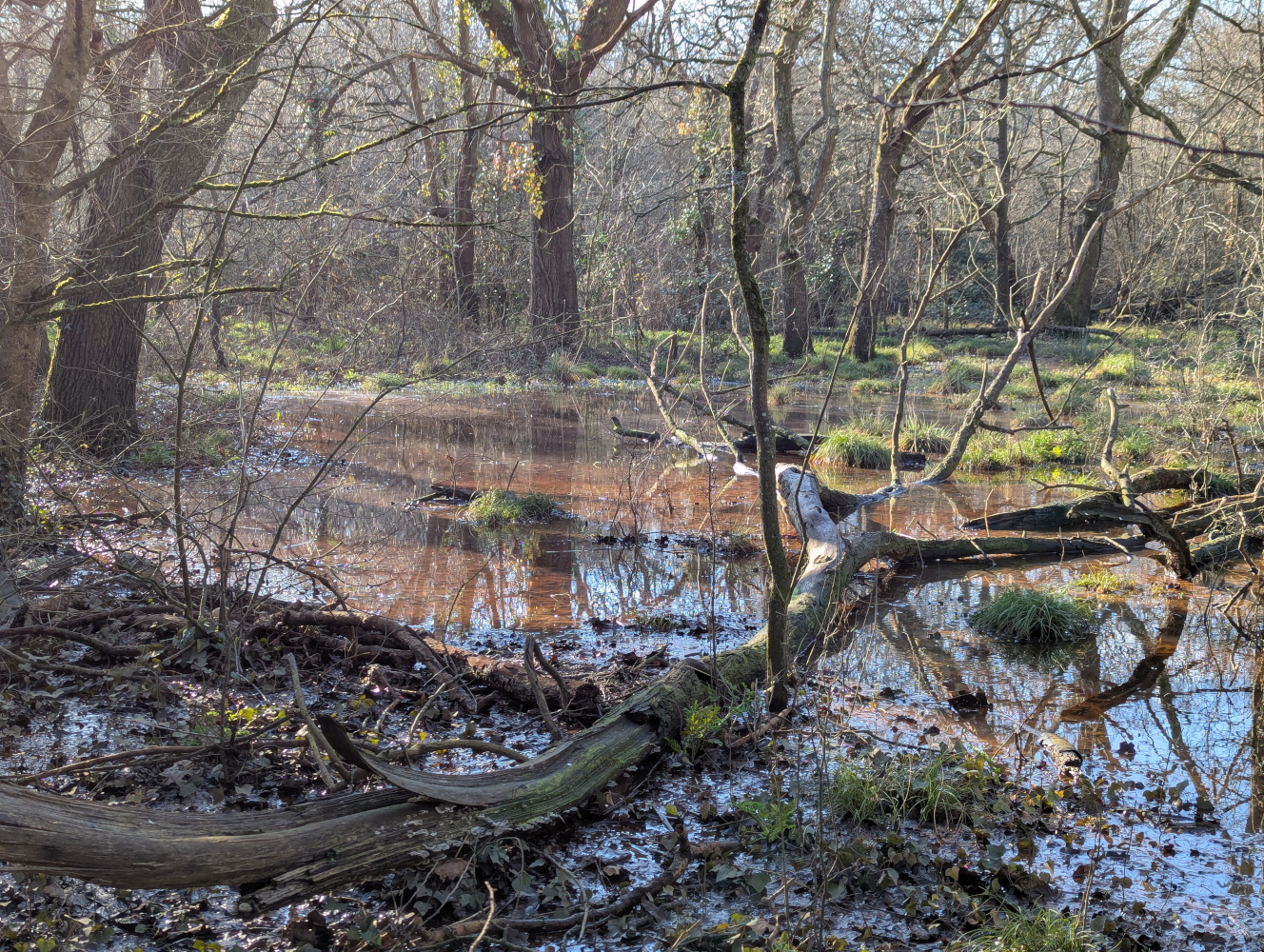 Bronze Lake
Bronze Lake
A metallic tinge to the water, sparkling in the afternoon sunlight. Shallow, barely more than a puddle, yet stretching away out of sight between the trees. Just like I remembered, from thirty years ago.
I was elated. There was nothing the next 400 metres of trudging through mud and puddles could do to dampen my spirits, and nor could the odd looks from strangers at this mud-caked weirdo emerging from the woods. Not even the S5 QRM could manage it, once I’d finally found somewhere dry enough to set up the radio. I was back in my childhood stomping grounds, my memory from decades ago was alive in my head once more, my boots and jeans had paid the price, and damnit I was going to be the first to put this Park on the Air.
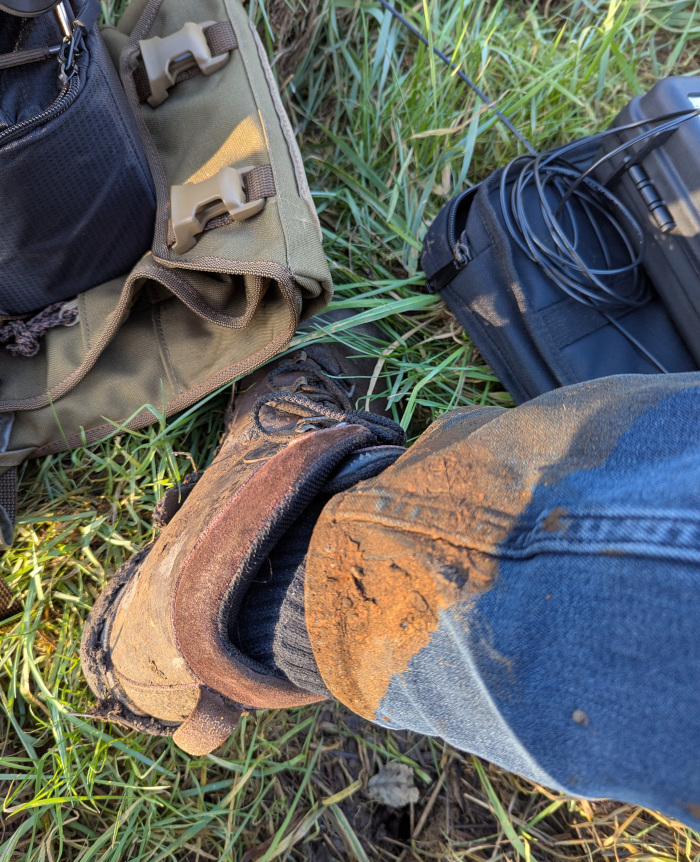 A modest price paid for recapturing your childhood.
A modest price paid for recapturing your childhood.
An egret and a heron eyed me warily as I continued up the riverbank to the Northbourne Meadows end of the nature reserve, where I found more space to set up. This would be the first outing for a few new bits of equipment, including a newer and sturdier bag, a dedicated pouch for my battery to replace the old bubblewrap, and a much smaller camp chair—which only toppled me backwards into the mud once, so I’ll take that as a win.
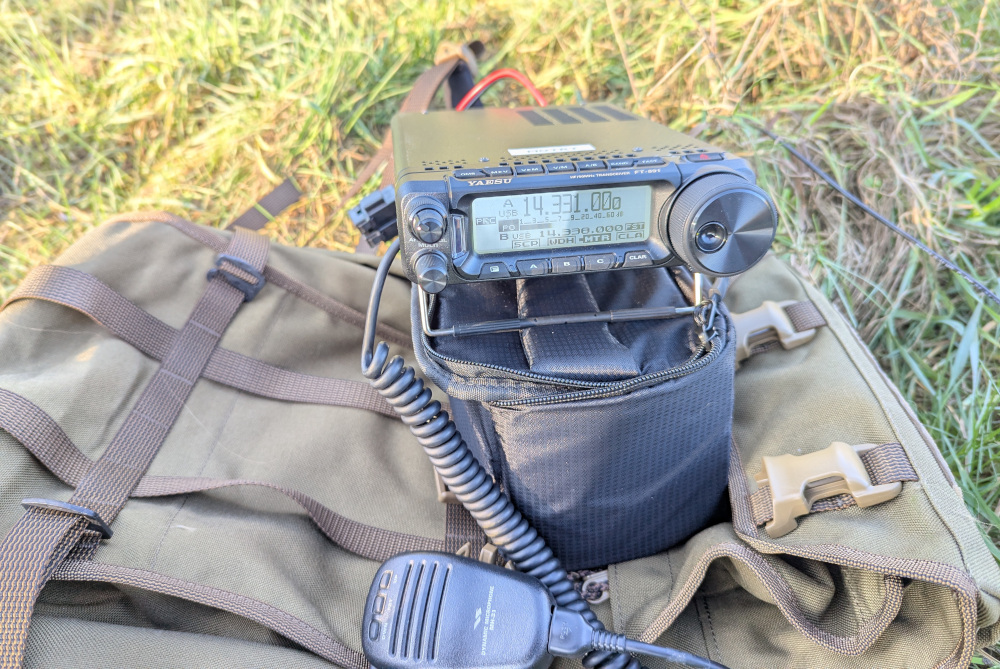 A leaning tower of stuff to support my radio
A leaning tower of stuff to support my radio
I planned a switch from 20 metres to either 40 or 10 at some point, especially when I noticed how bad the noise was on 20. But in the end the pile-up kept on coming for over an hour. There were a couple of contacts I couldn’t quite complete, but a lot of park-to-parks in there as well, and as ever Tobias DC1TC, Harm DK4HAA and trainee DN4HAA were a highlight—the first time I’ve had a three-operator activation call me park-to-park. By the time I made it through with 72 QSOs in the log, a definite chill was growing in the air, and with a long trudge back home in my near future, I decided that was enough for one day.
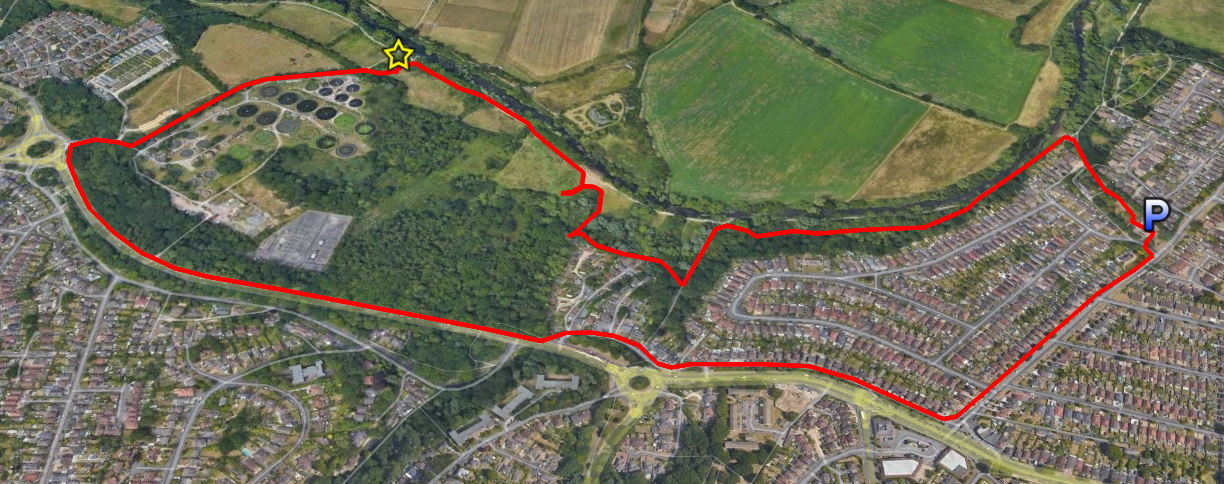 Walking route to and from the activation spot
Walking route to and from the activation spot
This adventure had provided exactly what I had hoped for, and now it was time for a cup of tea while I rested my legs.
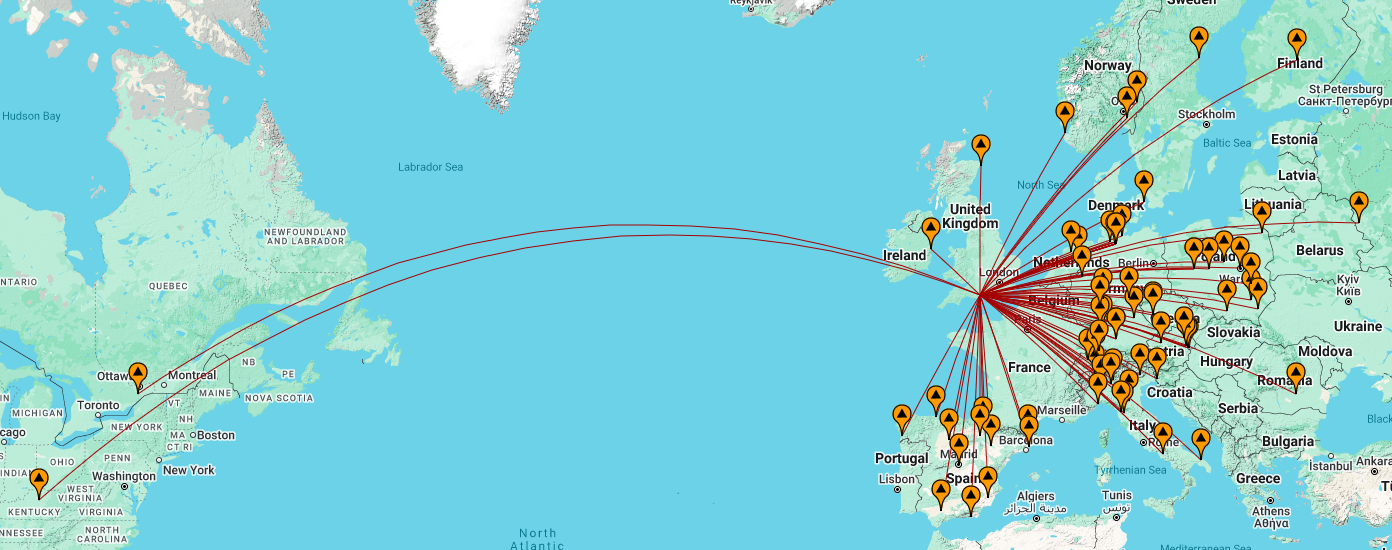 Map of contacts from the activation
Map of contacts from the activation
Many thanks to all my contacts this afternoon, and to the reader if you’ve stuck it out to the end. See you on the air next time!
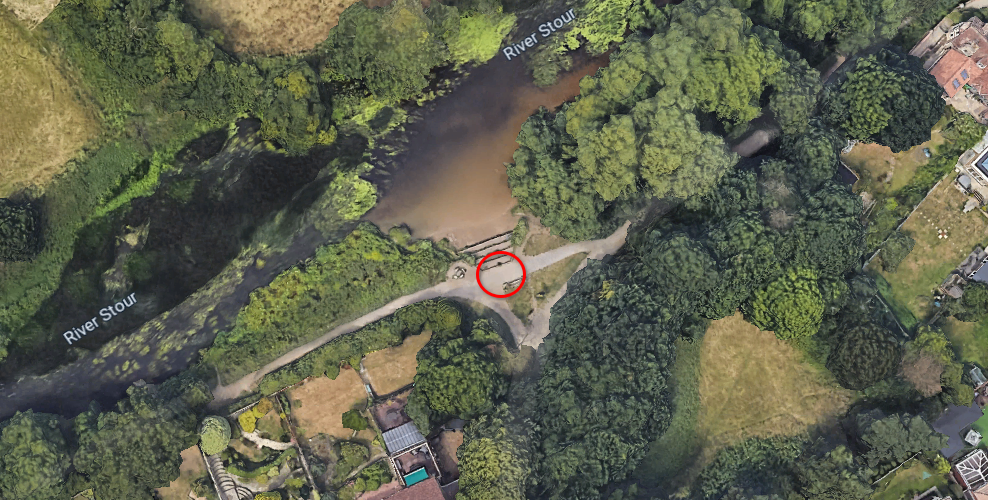
Comments